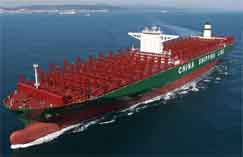| |
|
| |
|
 |
Supply
Chain by the Numbers |
| |
|
| |
- May 18, 2018 -
|
| |
|
| |
|
| |
|
| |
Target Piloting New Flow Distribution Center; US Population Growth Continues to Slow; UPS Proposes Two-Tiered Wage Program to Teamsters; Maesrk Taking Out Capacity in Response to Low Container Rates |
| |
|
| |
| |
| |
| |
5 |
|
That's how many bottles of shampoo might be delivered to a Target store under a test program the retailer is evaluating in a New Jersey distribution center, versus a full case of goods as is normally the replenishment unit of measure. As reported this week by the Wall Street Journal, Target hopes as a result to reduce the DC to store replenishment cycle from days to hours and reduce inventory at stores at the same time, especially at its new small-format stores in urban markets. The approach also uses a single pool of inventory to replenish stores and fulfill on-line orders, a departure from Target's existing processes. Target is calling the test New Jersey DC a "flow center." Under the approach, Target replenishes stores more frequently with smaller quantities of items more precisely tied to what has sold. That could mean shipping "five bottles of shampoo, a case of ketchup, two polo shirts on hangers and a pallet of water, all prepared to move out directly to the sales floor," Preston Mosier, Target's SVP of global supply chain and logistics field operations, recently said at an industry conference in New York. That approach in turn naturally results in less inventory held at stores, freeing up space room for more ecommerce fulfillment.
|
|
|
| |
| |
|
|
|
That's how many babies were born in 2017 for every 1,000 women of childbearing age according to a new report from the Centers for Disease Control. This metric, known as the general fertility rate, was thus at the lowest it has been since officials began keeping track, according to the report. That included a significant 3% drop from 2016 to 2017. There were also 3.853 million births in the US last year - the the lowest tally since 1987, when the US had far fewer residents. All this is a bit surprising, because baby booms often parallel economic booms, and last year was a period of low unemployment and a growing economy. One may be shifting attitudes about motherhood among millennials, who are in their prime child-bearing years right now. Rates for women in their 20s continued to fall and hit record lows. The estimated number of births per woman to keep the population just stable is 2.1. In 2017, that metric fell below 1.8, hitting its lowest level since 1978, though it is even lower in Japan and much of Europe. As they say, demography is destiny.
|
| |
| |
|
| |
| |
| |
$780 |
 |
That's about what Maersk Line, the world's largest ocean container carrier, could get from customers for shipping a box from Asia and Europe, about half the $1,500 break-even level. That according to Maersk's Q1 earnings report from its parent company A.P. Moller-Maersk. Maersk said its underlying loss widened to $239 million from $139 million a year earlier, with CEO Soren Skou blaming rampant overcapacity in container shipper as the main culprit. "In the short term we will be closing down some services," Skou said in an interview. "Overcapacity is the biggest defect." That actually is quite a change from the past, when Maersk often said it would defend its market share at any cost. Maersk leases or charters around 400 ships from a total of 750 in operation, and said that a number of them would be returned to their owners. Maersk also said in this period of low rates, higher bunker fuel prices had added $70 to the cost of shipping a container from Asia to Europe and across the Pacific to the US.
|
| |
| |
| |
|
|
|
| |
 |
 |
| |
|
|
| |